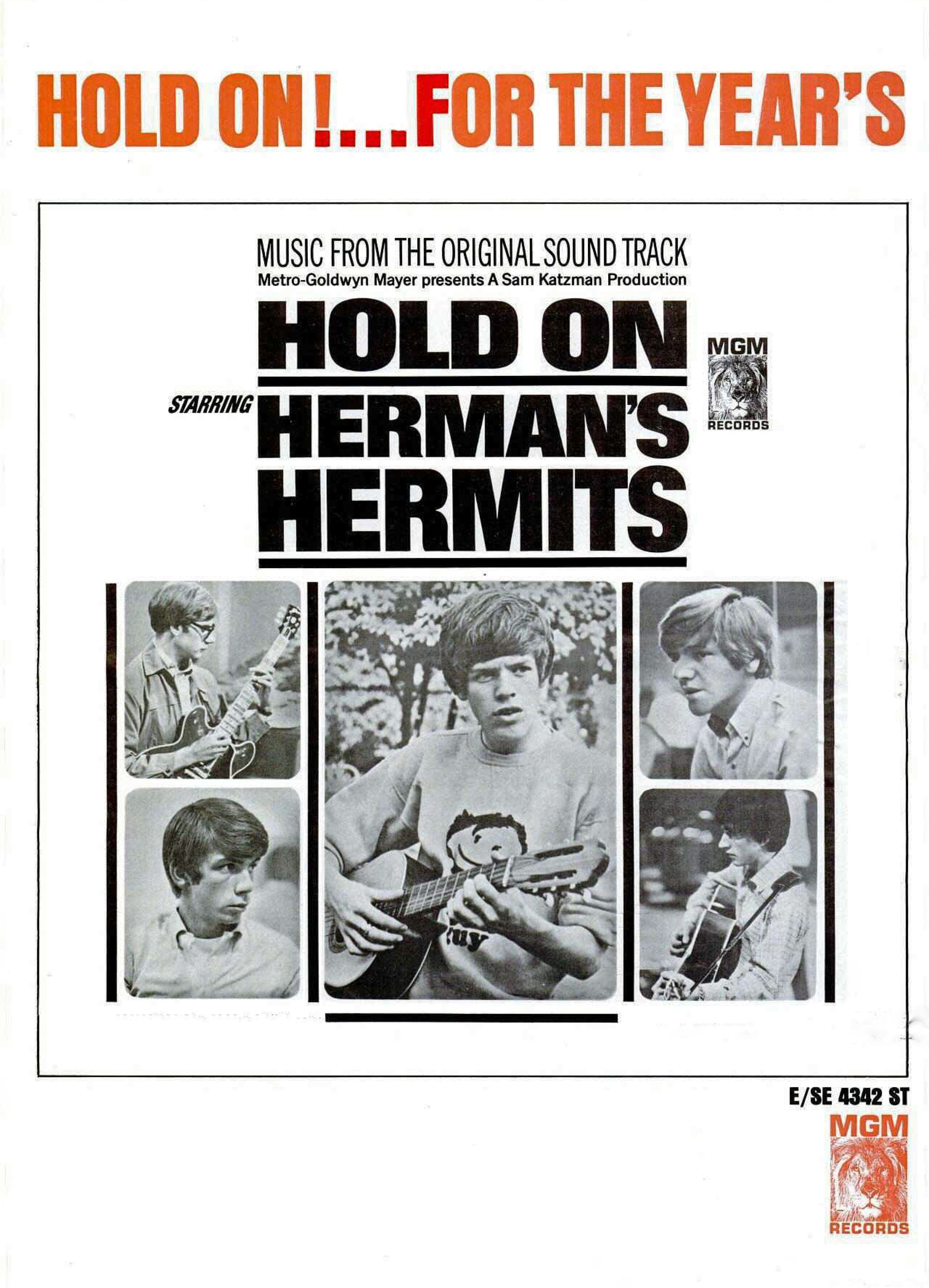
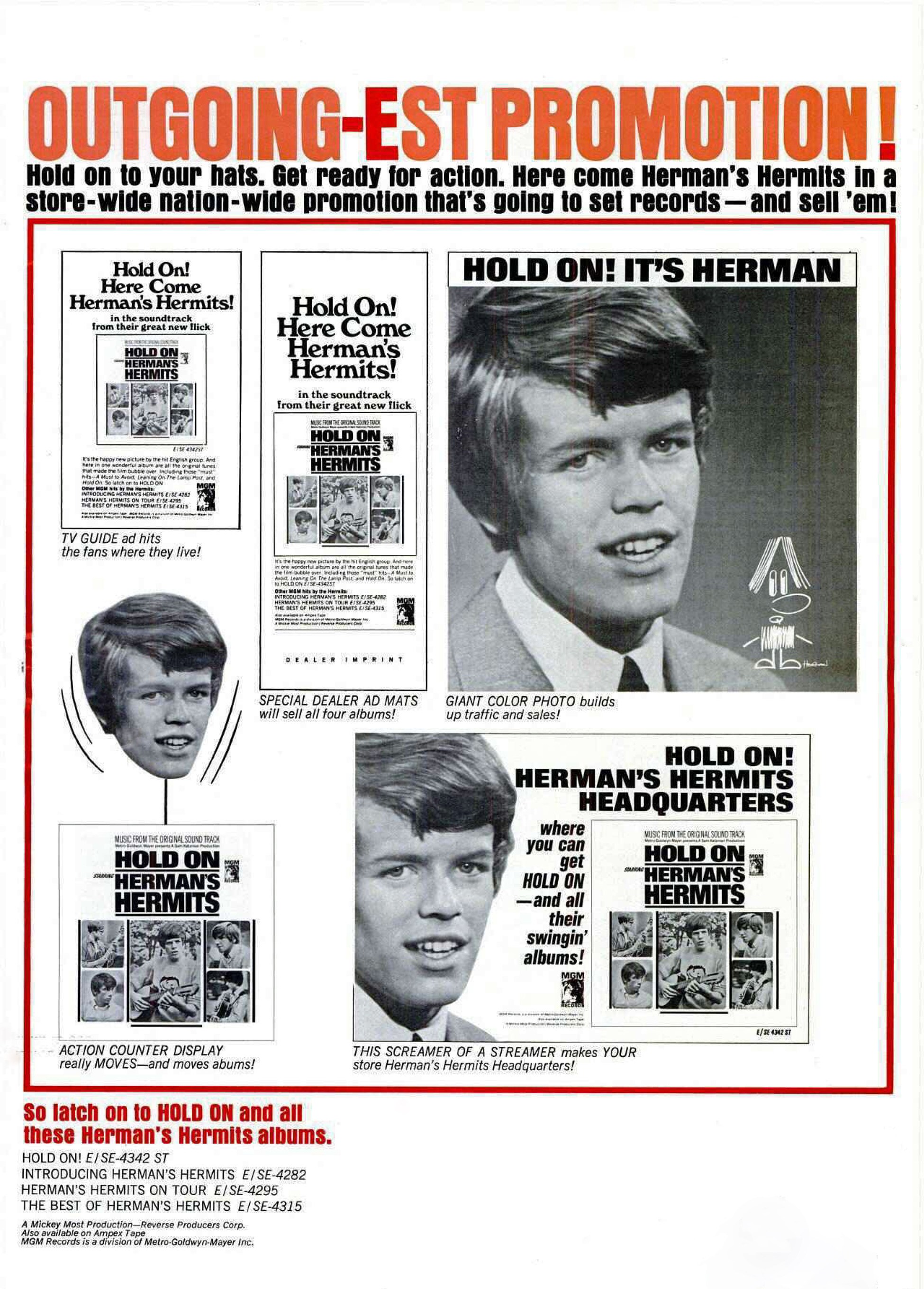
HOLD ON! Herman’s Hermits * MAKE ME HAPPY Shelley Fabares
![]()
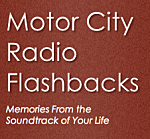 From the MCRFB NEWS archive: 1964
From the MCRFB NEWS archive: 1964
NEW YORK — On a July afternoon 25 years ago, a handful of radio listeners heard a musical program free from the usual frying, sputtering and crashing of hitch -hiking static that characterized customary radio reception.
The program, broadcast by Station W2XMN, at Alpine, N. J., on July 18, 1939, marked the birth of regularly scheduled broadcasting by frequency modulation radio, an invention of Maj. Edwin H. Armstrong, a Columbia University professor of electrical engineering.
Not many more than 25 FM receivers were in existence at that time to pick up that first FM program, relayed by Station WQXR in Manhattan. In contrast, today there are more than 1,200 FM broadcast stations in operation in the U. S. and their programs are heard by an audience estimated by the National Association of FM Broadcasters at a seven-day cumulative figure of 13,796,000.
WQXR observed the anniversary Saturday with a recreation of the first program. The program included the first two selections broadcast on that date, Haydn’s Symphony No. 100 and Tchaikovsky’s “Francesca da Rimini.”
It appears that the broadcasting of classical music at the debut of FM established a precedent that follows through today. The greater majority of FM outlets program primarily classical music or conservative instrumental versions of standards. (MCRFB note: see our current feature Detroit Radio FM Highlights – July 12, 1964 – go here).
FM in the past few years, however, has greatly increased its programming fare with jazz, folk, spoken word and even contemporary rock music.
The development of stereo has probably done more to bolster FM than any other factor during the past quarter century.
The conversion of many FM stations to stereo and the more diversified music formats have been, and certainly will become even a greater boon to the record industry. The key to sales, as most top record industry promotion executives will admit. is exposure of the product available. The more exposure the better.
Several weeks ago the FCC gave a big boost to the development of FM by announcing that by August 1965, jointly owned AM -FM stations in cities of more than 100,000 population will have to cut program duplication to 50 per cent of the FM broadcast week.
The FCC made the announcement in connection with the lifting of the year-long “freeze” on applications for new AM’s or major changes in AM facilities.
Again, the results can only be positive for the record industry reasoning that the more stations that hit the air the more programming material -mainly music – will be needed. No matter what music formats are adopted by new AM’s and 50 per cent FM’s, the record industry is slated to benefit through the opportunity to have its product exposed on many more broadcast stations. END
___
(Information and news source: Billboard; July 25, 1964)
A MCRFB Note: See our current feature Detroit Radio FM Highlights, July 12, 1964, GO HERE.

![]()
(Above article courtesy freep.com newspapers archives. Copyright 2016; Newspapers.com).
___
A MCRFB Viewing Tip: On your PC? For a larger detailed read CLICK ON IMAGE and open to second window. Click image anytime to return to NORMAL image size.
Click your server’s back button to return to MCRFB home page.
![]()
(Above article courtesy freep.com newspapers archives. Copyright 2016; Newspapers.com).
A MCRFB Viewing Tip: On your PC? For a larger detailed read CLICK ON IMAGE 2x and open to second window. Click image to return to NORMAL image size.
Click your server’s back button to return to MCRFB home page.
On your mobile device? Tap on image. Open to second window. “Stretch” across your device screen to magnify for larger print view.

![]()
 From the MCRFB NEWS archive: 1966
From the MCRFB NEWS archive: 1966
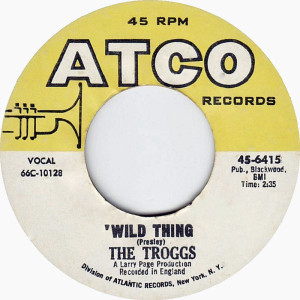 NEW YORK — The Troggs’ recording of “Wild Thing” will continue to be marketed on the Atco and Fontana labels. The injunction proceeding initiated by Mercury Records has been stayed until Sept. 1 and the request for a preliminary injunction by Atlantic Recording Corp., Atco’s parent company, and York-Pala Records against Mercury Records, Fontana’s parent company, was denied, by rulings handed down in New York Supreme Court last week. No decision as to the ultimate rights to this Troggs recording or to their future recordings was made.
NEW YORK — The Troggs’ recording of “Wild Thing” will continue to be marketed on the Atco and Fontana labels. The injunction proceeding initiated by Mercury Records has been stayed until Sept. 1 and the request for a preliminary injunction by Atlantic Recording Corp., Atco’s parent company, and York-Pala Records against Mercury Records, Fontana’s parent company, was denied, by rulings handed down in New York Supreme Court last week. No decision as to the ultimate rights to this Troggs recording or to their future recordings was made.
 The rulings mean that no injunction is in effect and the competitive battle between Atco and Fontana over the Troggs’ “Wild Thing” will continue through the summer. “Wild Thing” is in the No. 6 spot on Billboard’s Hot 100 Chart this week crediting both Atco and Fontana.
The rulings mean that no injunction is in effect and the competitive battle between Atco and Fontana over the Troggs’ “Wild Thing” will continue through the summer. “Wild Thing” is in the No. 6 spot on Billboard’s Hot 100 Chart this week crediting both Atco and Fontana.
It has been almost two decades since two firms have simultaneously sold the same version of a pop hit. Last such case in the pop field was when Mercury
Records and National Records sold Eileen Barton’s, “If I Knew You Were Coming I’d Have Baked a Cake.” END
(Information and news source: Billboard; July 9, 1966)
![]()
BILLBOARD HOT 100 TOP FIVE: WEEK-ENDING JULY 30, 1966
(click on image 2x for detailed view)
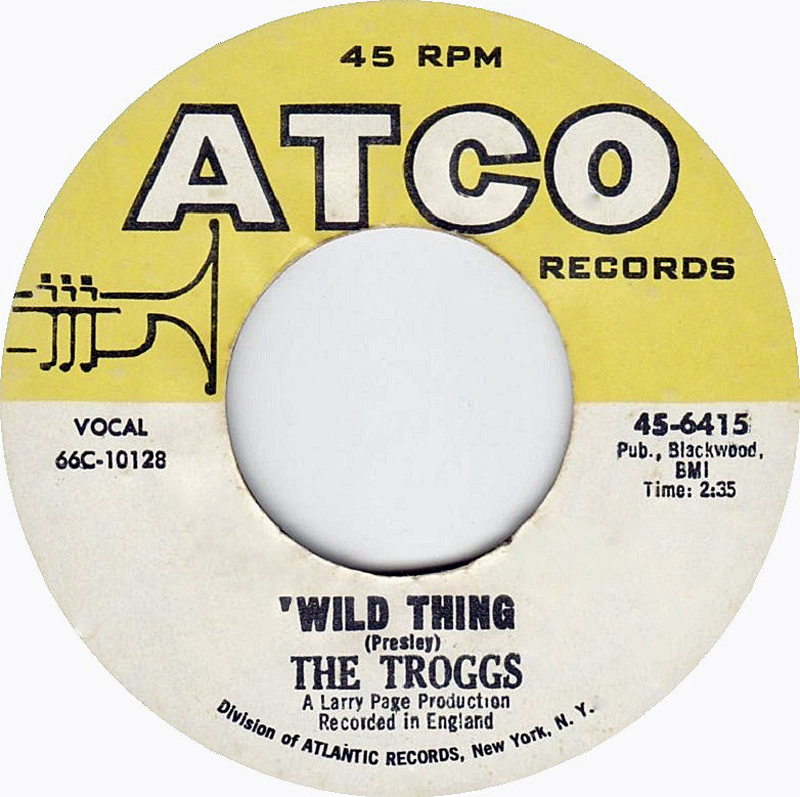 NUMBER 1 IN AMERICA ’66 * The Troggs * WEEK OF 07/24/66 – 08/06/1966
NUMBER 1 IN AMERICA ’66 * The Troggs * WEEK OF 07/24/66 – 08/06/1966___
ELEVEN WEEKS on the singles chart, “Wild Thing” by The Troggs peaked this week at No. 01 (2 weeks) on the Billboard Hot 100, week-ending July 23 through August 6, 1966. (source: Billboard)
MCRFB Link: For the previous No. 1 record in the U.S.A. 1966 GO HERE.
![]()